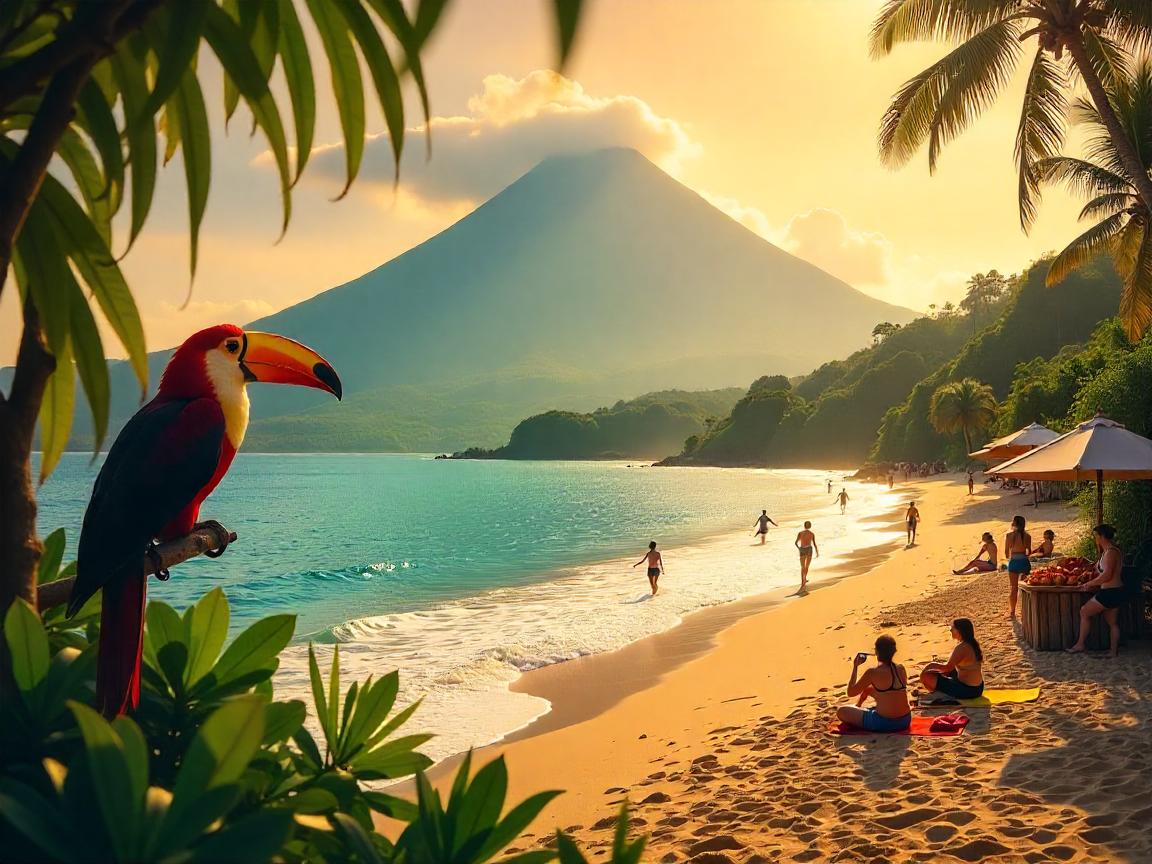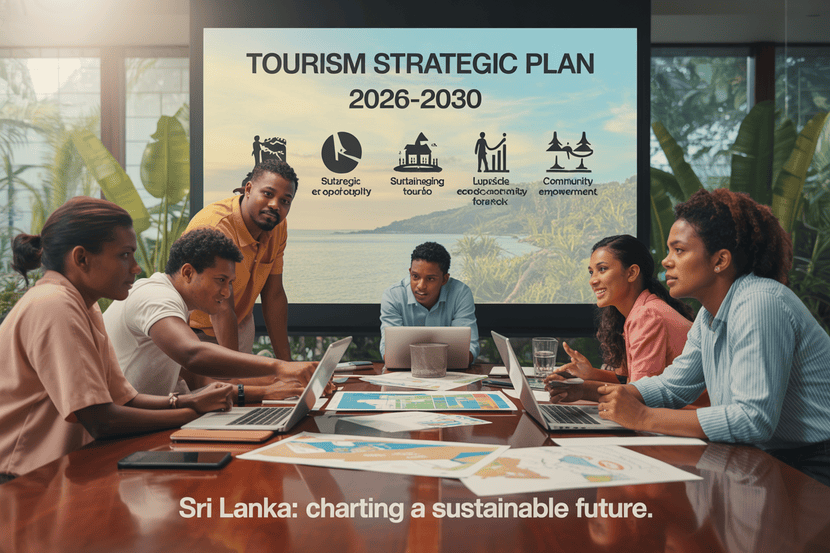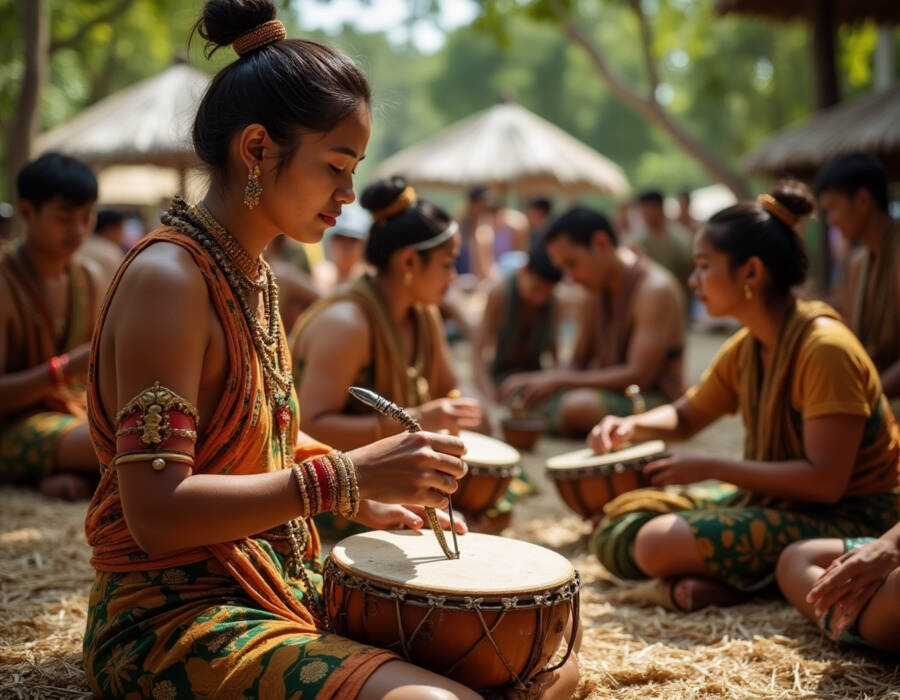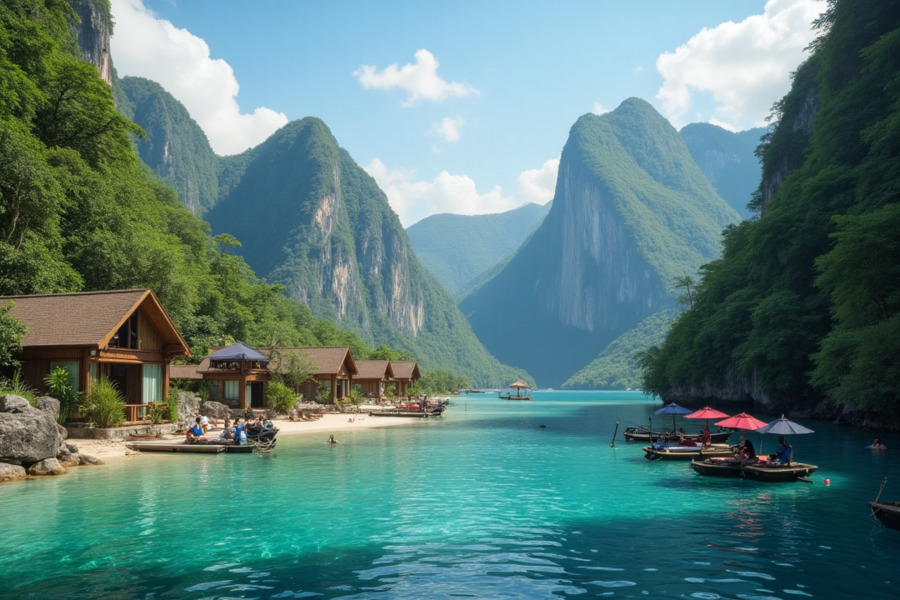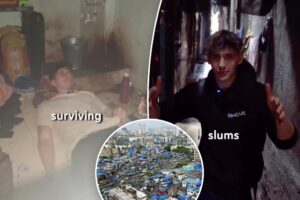≡-Costa Rica Joins Canada, Mexico, US, Brazil, Colombia, Portugal, Japan in Supercharging Tourism Economy, Generating Revenue with Urban Art, New Update You Need To Know – Viral of Today
<> Viral of Today <>
Home » Costa Rica Travel News » Costa Rica Joins Canada, Mexico, US, Brazil, Colombia, Portugal, Japan in Supercharging Tourism Economy, Generating Revenue with Urban Art, New Update You Need To Know Friday, June 27, 2025Costa Rica has just made a bold leap into the global spotlight—joining Canada, Mexico, US, Brazil, Colombia, Portugal, and Japan in a thrilling new wave of tourism innovation. These countries aren’t just building hotels or printing brochures. They’re supercharging their tourism economies with something far more dynamic: urban art.Yes, you read that right. Costa Rica, already known for its biodiversity and “Pura Vida” charm, now aligns with Canada, Mexico, and the US in using large-scale murals, graffiti walls, and public installations to generate revenue and captivate new audiences. The stakes? High. The results? Game-changing.Meanwhile, places like Brazil and Colombia have long embraced street art as a cultural lifeline. Now, Costa Rica follows their lead—strategically using color, culture, and concrete walls to tell stories that no marketing campaign could replicate.And that’s not all. As Portugal and Japan evolve their creative economies, using urban art to attract young, culturally curious travelers, Costa Rica steps up—vivid, bold, and completely unforgettable.So what’s the update you need to know? Costa Rica’s recent debut at Canada’s Mural Festival in Montreal didn’t just mark its first appearance. It marked a transformation. It proved that Costa Rica, like the US, Mexico, Colombia, and Brazil, can turn art into impact, and foot traffic into financial growth.Moreover, these nations aren’t just decorating their cities. They’re building cultural bridges, expanding traveler profiles, and carving out new tourism revenue streams. And Costa Rica is now a proud part of this powerful, paint-splashed movement.With momentum building, and the world watching, the message is clear: urban art is no longer a side attraction. It’s a front-row ticket to the future of global tourism. And with Costa Rica now standing beside Canada, Mexico, the US, Brazil, Colombia, Portugal, and Japan, one thing’s for sure—this colorful revolution is only getting started. Keep reading to discover how murals are turning into millions.Costa Rica Showcases “Pura Vida” to the World at Montreal’s Mural Festival 2025In a dazzling fusion of art, culture, and tourism strategy, Costa Rica stepped onto a global stage at the Mural Festival 2025 in Montreal, creating an unforgettable first impression. A massive, hand-painted mural by Costa Rican artist Sebastián Ayala now spans an entire city block, becoming a visual magnet for hundreds of thousands of attendees and putting the country’s unique spirit—“Pura Vida”—front and center.This moment marked Costa Rica’s debut at the internationally renowned urban art event. However, it wasn’t just a mural. It was a multi-sensory, experience-driven campaign with one goal: to attract more Canadian travelers to the lush landscapes and vibrant lifestyle of this Central American paradise.An Immersive Cultural Showcase Reaching Half a MillionOver 500,000 visitors poured into Montreal’s Saint-Laurent Boulevard during the 10-day Mural Festival. Costa Rica’s installation quickly became one of the most talked-about exhibits.Featuring iconic symbols like a toucan, sloth, tropical fruits, and traditional dancers, the mural transformed a blank wall into a living postcard. The phrase “Pura Vida”, painted in vivid green, acted as both a greeting and an invitation. It pulsed with color, movement, and a sense of warmth that made people stop, photograph, and wonder.But it didn’t stop at visuals.Festival-goers could scan a QR code to enter a 3D virtual tour of Costa Rica’s landscapes—from cloud forests and volcanoes to pristine beaches. The booth also offered tropical ice cream tastings, reflecting the flavors of the country, and 3,500 limited-edition postcards were handed out to keep the memory tangible.Strategic Targeting of the Canadian MarketThis effort wasn’t simply about art—it was about tourism strategy at its finest. The Costa Rican Tourism Board (ICT), which sponsored the mural, knows the value of reaching audiences through creativity and emotional engagement.Canada is Costa Rica’s second-largest tourist market, with over 147,000 Canadian visitors arriving by air from January to May 2025 alone. With direct flights from Toronto and Montreal, and a strong interest in eco-travel among Canadians, Costa Rica offers the perfect destination for nature lovers, digital nomads, and culturally curious explorers.To sweeten the deal, the ICT also partnered with Air Canada to provide a 10% discount on direct flights during the “green season”—a time when the country’s biodiversity is at its most lush and vibrant.Why Public Art Moves TravelersPublic art is more than a visual experience. It’s a conversation starter. It turns a wall into a window. By installing a culturally immersive mural in a bustling urban hub like Montreal, Costa Rica reached potential travelers where they live, work, and walk—long before they book a ticket.This kind of visibility creates a deep connection. It bypasses brochures and speaks to emotion. And it resonates especially with younger generations, who crave authenticity and value-driven travel experiences. By using street art to build brand identity, Costa Rica stood out—not just as a vacation spot, but as a place of meaning.A Long-Term Investment in Tourism IdentityThe mural won’t disappear when the festival ends. It’s set to remain for at least a year, offering millions more the chance to engage with Costa Rica’s message. Each passing pedestrian becomes part of a growing network of global storytellers who will share this vibrant artwork across social media and word of mouth.This isn’t a one-off promotion—it’s a living, breathing tourism investment. It demonstrates how creative diplomacy, cultural representation, and public space can be fused into a high-impact marketing campaign that feels less like advertising and more like art with purpose.A Symbol of Welcome and WarmthAt its core, the mural tells the story of Costa Rica’s generous, joyful soul. It’s a nation known for its environmental leadership, peaceful values, and warm-hearted people. By bringing this message to the streets of Montreal, the ICT gave travelers a preview of what to expect: a place where nature thrives, and so do you.The festival presence allowed Costa Rica to amplify its national ethos, create emotional bonds, and spark the wanderlust that drives decisions. It’s a new kind of travel promotion—immersive, inclusive, and impactful.Looking Ahead: A Model for Tourism MarketingWith global travel recovering, Costa Rica is taking steps to redefine how destinations connect with travelers. It’s not about flashy commercials or discount deals alone. It’s about telling stories—visually, emotionally, and strategically. It’s about being present where your future visitors already are.The ICT’s mural project could serve as a blueprint for other nations seeking meaningful engagement in crowded tourism markets. It proves that public art, done with cultural integrity and strategic placement, can serve as a powerful ambassador.When Art and Tourism Align, Magic HappensFrom the cobblestone paths of Montreal to the rainforests of Costa Rica, this mural is more than just paint—it’s a portal. A celebration. A bridge.In 2025, Costa Rica reminded the world that travel is not just about going somewhere. It’s about being moved—even before the journey begins.How Urban Art Is Shaping Global Tourism: 19 Countries Turning Walls into WondersIn the heart of bustling cities across the globe, color-splashed walls, soaring murals, and bold graffiti have become more than just artistic expression—they’ve become powerful tourism magnets. From Berlin’s iconic East Side Gallery to the electrified alleys of Melbourne, urban art has transformed into a global industry, redefining the travel experience for millions.Across 19 countries, urban art is now a front-facing tool in national tourism strategies. These countries understand that today’s travelers aren’t just seeking monuments—they’re looking for stories, raw creativity, and local flavor. Urban art delivers all that, painted right onto city walls.In Berlin, visitors walk along open-air canvases stretching blocks, chronicling history through spray paint and imagination. In London’s Shoreditch, street art tours are booked out by travelers who want to explore the city’s cultural pulse. Bogotá, Colombia, embraces graffiti as a cultural statement, with artists guiding immersive walking tours that double as history lessons.Meanwhile, São Paulo and Buenos Aires stand as South American powerhouses of the scene, where whole neighborhoods are draped in vibrant visuals. Valparaíso, Chile, a UNESCO Creative City, draws thousands to its mural-covered hills, proving how public art can revive entire districts.Even in Asia, the momentum is rising. Seoul’s Ihwa Mural Village and Tokyo’s backstreets have become urban art hotspots, combining traditional aesthetics with modern street narratives. Cape Town, Lodz, Brussels, and Montreal all integrate murals directly into their tourism maps.But what makes urban art truly magnetic for tourists? It’s the human connection. These walls don’t speak from a distance—they speak eye-level, unfiltered, in real time. They reflect the social, political, and emotional currents of a place, told by the people who live there.Countries like Portugal, Spain, Italy, Mexico, and Canada now actively fund mural festivals and promote street art trails as cultural experiences. Travelers are no longer walking past these walls—they’re walking toward them.As tourism shifts toward immersive, authentic, and locally driven experiences, urban art stands out as a vivid invitation. It says: “Come see who we really are.”In 2025 and beyond, the world’s greatest galleries might not be behind closed doors—they’re on the open streets, waiting for you to look up.The Soul of “Pura Vida”: Costa RicaThere are places that leave a mark on your passport—and then there are places that leave a mark on your soul. Costa Rica is unmistakably the latter.Tucked between the Caribbean and the Pacific, this Central American gem isn’t just a destination. It’s a way of life, a rhythm, a mood—anchored in the iconic national motto: “Pura Vida.” It means “pure life,” but once you set foot here, you’ll understand it’s more than words. It’s a feeling you carry home.So, if you’re dreaming of cloud forests, volcanic hot springs, sun-drenched beaches, and some of the world’s most biodiverse ecosystems—all tied together with warm smiles and unshakable peace—consider this your humanized, curated guide to Costa Rica.Where to Go: The Regions that Breathe Life1. Arenal & La Fortuna:Start your journey inland, at the base of Arenal Volcano. This near-perfect cone watches over lush rainforests, adventure parks, and geothermal hot springs. Go ziplining over treetops, hike through lava fields, or take a dip in the steamy waters of Tabacón Hot Springs. It’s adrenaline, serenity, and soul-soothing magic all in one place.2. Monteverde Cloud Forest:High up in the mountains, you’ll find misty pathways suspended in green. This is where you wander slowly, breathe deeply, and listen to hummingbirds flutter past. Monteverde is the kind of place where the silence speaks volumes—and nature greets you like an old friend.3. The Pacific Coast – Guanacaste & Nicoya Peninsula:On the northwestern side, Guanacaste offers golden beaches, luxe resorts, and surfing towns like Tamarindo and Nosara. The Nicoya Peninsula is also one of the world’s five Blue Zones—where people routinely live past 100. Maybe it’s the sun. Maybe it’s the rice and beans. Or maybe it’s just… Pura Vida.4. The Caribbean Side – Puerto Viejo & Cahuita:The vibe shifts here. Reggae drifts through the air. Coconut-rich Afro-Caribbean cuisine sizzles in open kitchens. Puerto Viejo is a kaleidoscope of colors, rhythms, and cultures. Explore Cahuita National Park by foot or snorkel, and feel the magnetic pull of Costa Rica’s lesser-known coast.What to Experience: Slow, Deep, Real TravelCosta Rica isn’t a checklist. It’s an unfolding.Yes, you’ll want to hike in Corcovado, spot a resplendent quetzal, and raft down the Pacuare River. But the real magic comes in the quieter moments.Like sipping coffee on a misty veranda in San Gerardo de Dota, watching clouds roll through the valley. Or buying fresh fruit from a roadside vendor while monkeys chatter above. Or staying in a family-run eco-lodge where your hosts treat you like kin.There’s a growing shift here—regenerative tourism is more than a trend. It’s becoming the norm. More travelers seek meaningful exchange, and Costa Rica rises to meet them with community-led conservation projects, wildlife sanctuaries, and organic farms that double as learning spaces.Beach Bliss: Coastlines for Every MoodIf you’re chasing waves, Santa Teresa and Dominical are surfer havens where the jungle kisses the shore. If you want a chic, laid-back vibe, Flamingo and Conchal offer white sand and upscale calm.Craving off-the-grid seclusion? Try the Osa Peninsula, where jaguars still roam and roads turn to rivers. Or take a water taxi to Tortuguero, often called the “Amazon of Costa Rica,” where canals replace highways and sea turtles outnumber tourists.What to Eat: Simple, Soulful, and So FreshCosta Rican food is comfort at its core. Start with gallo pinto, a humble but flavorful mix of rice and beans, often served with eggs and plantains. Midday calls for a casado—a plate packed with meat or fish, salad, beans, and tortillas.Fresh tropical fruits—pineapple, papaya, mango, and guava—are everywhere. But the real treat? Sitting in a family-run soda (small diner) where everything tastes like it was made with love. Order the ceviche with a cold Imperial beer and soak in the sounds of laughter and birdsong.Where to Stay: From Luxe to LocalCosta Rica caters to every traveler—from barefoot backpackers to luxury seekers.In Papagayo, you’ll find high-end resorts with infinity pools and curated nature experiences. Nayara Tented Camp, near Arenal, offers safari-style tents with jaw-dropping volcano views and sloth-spotting on site.But don’t overlook the gems hidden in the hills and forests: off-grid cabins, treehouses, or wellness retreats where yoga meets permaculture. Some of the most memorable stays come from Eco-Lodges built by local families who invite you to share their land, stories, and table.Getting There and Getting AroundFly into San José (SJO) or Liberia (LIR) depending on your itinerary. Rent a car if you crave freedom—but know that some roads require patience (and 4WD). Otherwise, Costa Rica has reliable shuttle networks and domestic flights that make hopping from volcano to beach a breeze.Final Thoughts: Don’t Just Visit. Feel.Costa Rica isn’t a place you cross off a list. It’s a place you carry with you.You come here to marvel at nature. But you leave with something deeper—an appreciation for slowness, kindness, and interconnectedness.Whether you’re swinging from a zip line, floating down a jungle river, or watching scarlet macaws fly overhead, you’ll feel the pulse of a country that knows how to live well—and invites you to do the same.Come for the adventure. Stay for the soul. That’s Pura Vida.Tags: Air Canada, Canada, canadian travelers, Central America travel, Costa Rica, Costa Rican Tourism Board, cultural tourism, global art festivals, Montréal, Montreal street art, mural art, Mural Festival 2025, Pura Vida, Regenerative tourism, Saint-Laurent Boulevard, Sebastián Ayala, Tourism marketing
This information will surprise you!
See also
- Read until the end to discover everything.
- Important information you need to know.
- Interesting facts and helpful tips.
Conclusion
Did you enjoy the news? Keep following us daily!
